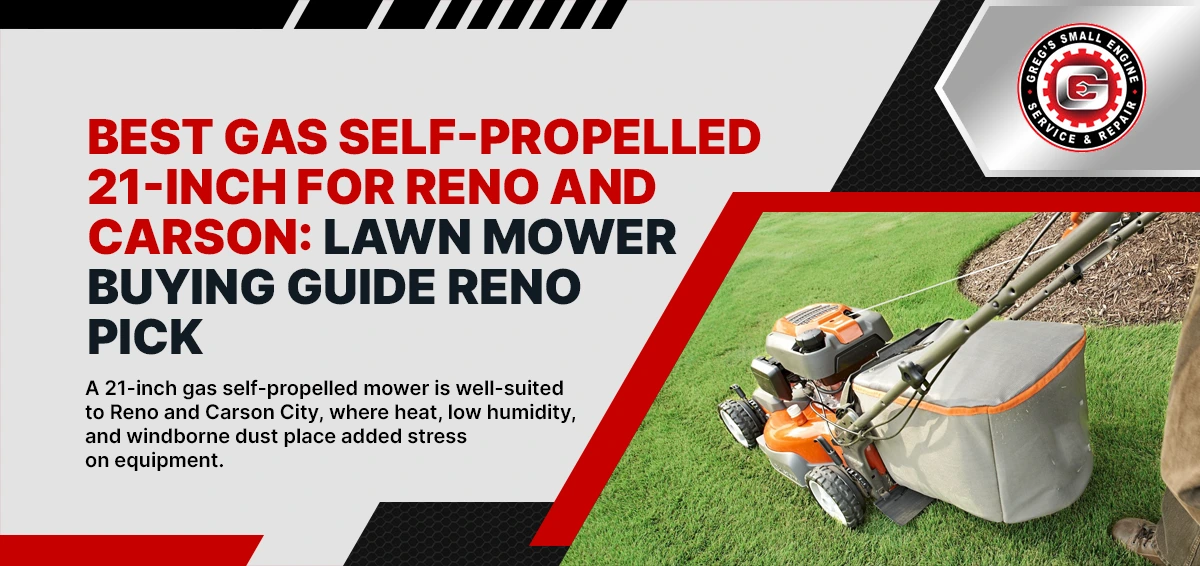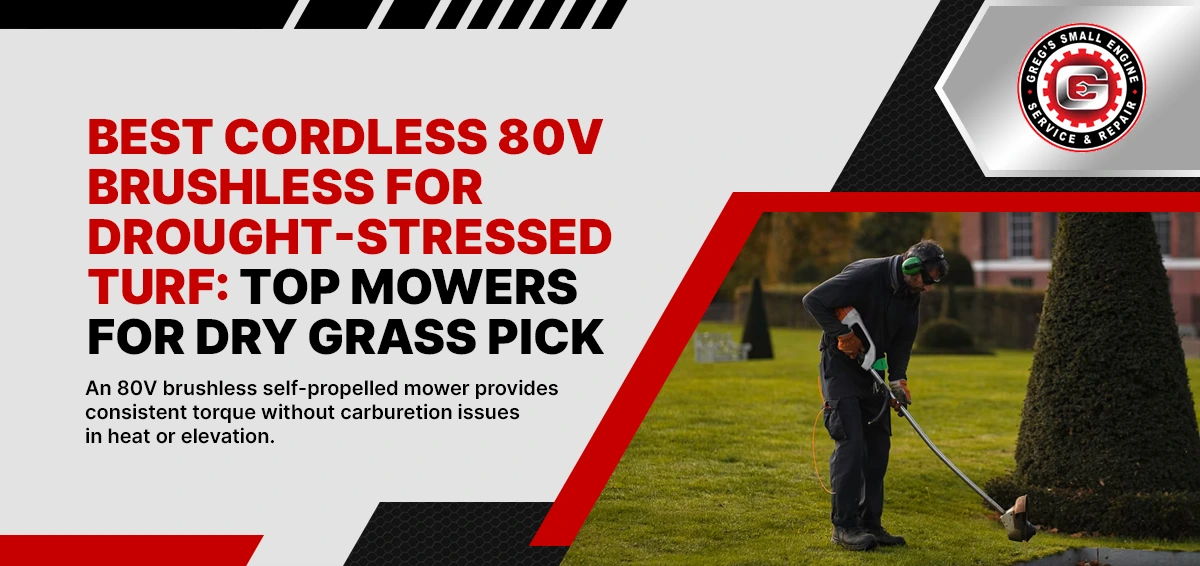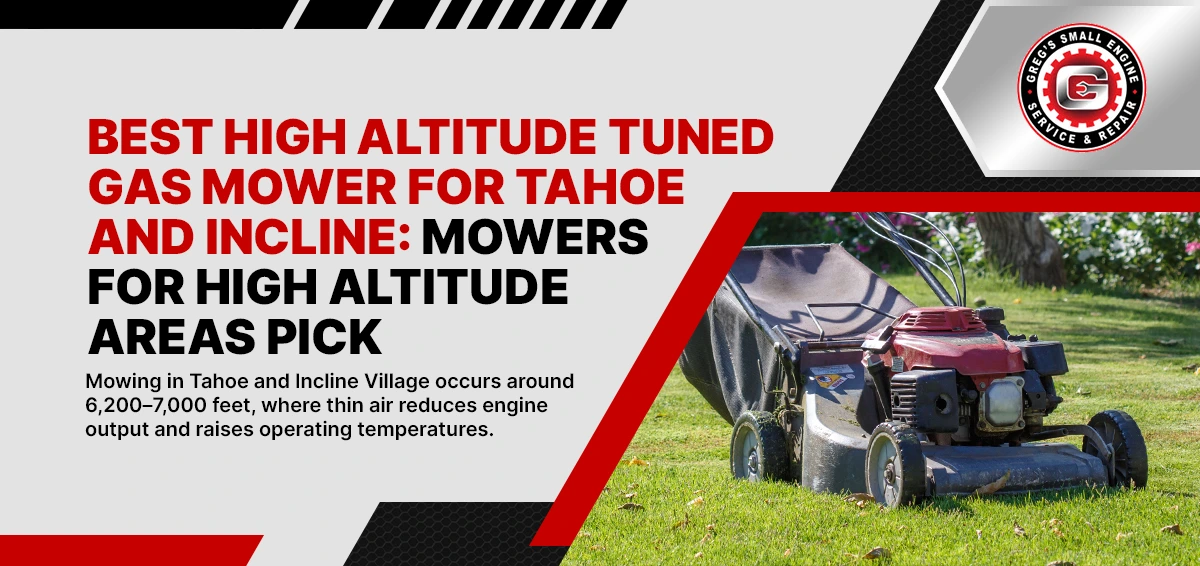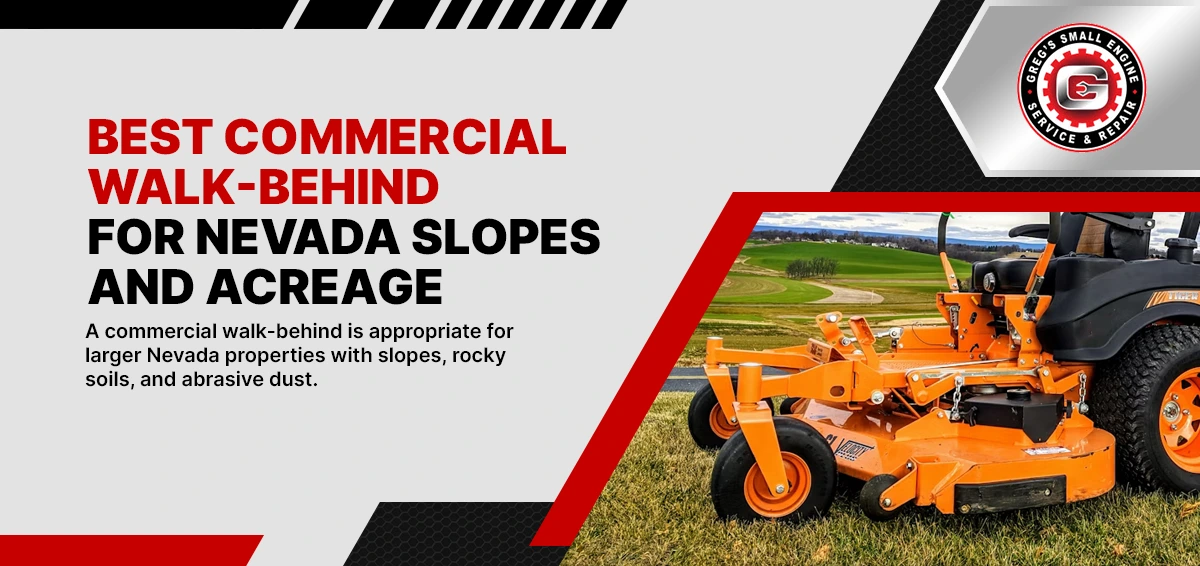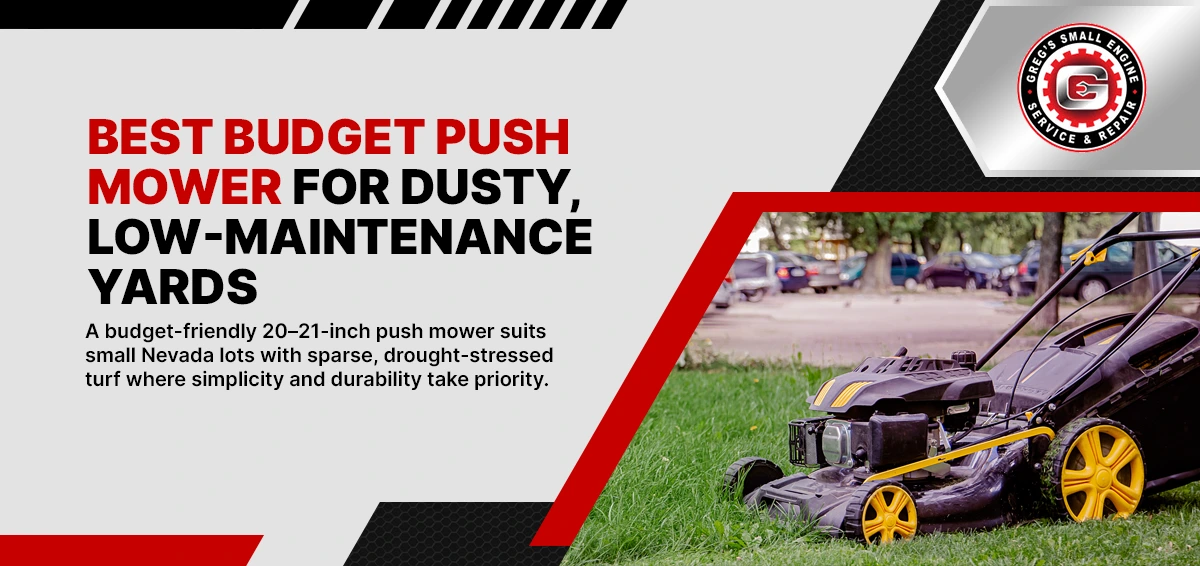The best lawn mower for the Nevada climate must withstand extreme heat, abrasive dust, and drought-prone turf from Reno to Las Vegas. Selecting the correct machine depends on deck material and size for sparse or mixed grasses, robust air filtration for fine sand, high wheel design for rocky, uneven lots, and corrosion resistance in low-humidity conditions.
Prioritize engines with reliable cooling, sealed bearings, and multi-stage filters; consider self-propelled drive for slopes and variable-speed control for precise cuts. Bagging and mulching capabilities should match HOA standards and water-saving practices. The following models meet these criteria and support efficient maintenance across Nevada yards.
Best Gas Self-Propelled 21-Inch for Reno and Carson: Lawn Mower Buying Guide Reno Pick
A 21-inch gas self-propelled mower is well-suited to Reno and Carson City, where heat, low humidity, and windborne dust place added stress on equipment. Rear-wheel drive improves traction on compacted or uneven soils, and a balanced 21-inch deck covers typical lots without sacrificing maneuverability.
Power loss is expected at 4,500–4,800 feet; engines with strong midrange torque and optimized cooling maintain more consistent performance. The configuration below aligns with Nevada’s operating conditions and water-conservation practices.
Key specifications for Nevada conditions
- 160–200 cc engine with efficient shrouding and clear airflow paths.
- Dual-element air filtration (foam pre-filter plus paper cartridge) or cyclonic pre-cleaner.
- Variable-speed rear-wheel drive; 8–11 in. rear wheels; sealed bearings.
- 3-in-1 deck (bag/mulch/discharge) with 1.5–4.0 in. height range.
- Powder-coated steel or cast-aluminum deck; front bumper or wear plate.
- High-altitude jet kit or EFI to stabilize fueling above ~4,000 ft.
Cutting performance and deck setup
- Mulching or medium-lift blades are preferred to limit dust and turf scalping.
- Mow at 3.0–3.5 in. to shade soil and reduce heat stress.
- Use wide-throat discharge chutes and smooth deck interiors for sparse grass.
- Reserve bagging for HOA compliance, seedheads, or seasonal debris.
Maintenance and ownership
- Clean or replace the foam pre-filter every 10–15 hours in dusty periods.
- Service the paper element per schedule; inspect cooling fins and shrouds.
- Sharpen blades every 15–20 hours; verify deck level after curb or rock strikes.
- Use fresh fuel with stabilizer; store in ventilated shade to control heat soak.
This specification delivers reliable cutting quality and manageable upkeep for Nevada’s dry, abrasive conditions and elevated terrain.
Best Cordless 80V Brushless for Drought-Stressed Turf: Top Mowers for Dry Grass Pick
An 80V brushless self-propelled mower provides consistent torque without carburetion issues in heat or elevation. For drought-stressed Nevada lawns, the objective is clean cuts at higher heights with minimal dust agitation and efficient power use. The configuration below aligns with dry, sparse turf and abrasive soil.
Key specifications for dry, dusty conditions
- 21–22 in. deck with 3-in-1 capability and a true 1.5–4.0 in. height range.
- High-torque brushless motor with load sensing to prevent bogging in patchy growth.
- Variable-speed rear-wheel drive, 8–11 in. rear wheels, and sealed bearings.
- Fine-particle protection: mesh motor screens and gasketed battery bay.
- A dual-battery tray (automatic switchover) supports 7.5–10 Ah packs; onboard status indicators.
- Composite or powder-coated steel deck with smooth interior and wide discharge throat.
Cutting performance and turf protection
- Use a mulching or medium-lift blade to limit soil updraft and protect weakened crowns.
- Mow at 3.0–3.5 in. to shade soil and reduce evapotranspiration.
- Engage load-sensing mode rather than constant “turbo” to avoid tearing dry leaf blades.
- Side discharge is preferred only when clearing seedheads; otherwise, mulch is used to return micronized clippings.
Runtime and charging expectations
- Typical throughput: 45–60 minutes per 7.5–10 Ah pack on mixed, sparse turf.
- Fast charger with active cooling reduces heat soak between cycles.
- Stagger packs to maintain balanced wear and predictable session length.
Maintenance and ownership
- Brush debris from motor vents and battery bay after each use.
- Inspect and sharpen blades every 15–20 hours; verify deck level periodically.
- Store batteries in a ventilated, shaded location; avoid leaving packs on the mower in high heat.
This specification supports reliable cutting quality, reduced dust disturbance, and efficient energy use on drought-stressed Nevada lawns.
Best High Altitude Tuned Gas Mower for Tahoe and Incline: Mowers for High Altitude Areas Pick
Mowing in Tahoe and Incline Village occurs around 6,200–7,000 feet, where thin air reduces engine output and raises operating temperatures. A high-altitude-ready 21–22 inch self-propelled mower with calibrated fueling, efficient cooling, and dust control maintains consistent blade speed and clean cuts on mixed, drought-stressed turf. Rear-wheel drive improves sloped or uneven ground control, while a deck that supports higher cut heights protects weakened grass crowns.
Key specifications for elevation and terrain
- 170–200 cc class engine with EFI or high-altitude jet kit; governor tuned for steady RPM.
- High-flow cooling shrouds and unobstructed fin paths; debris screen over flywheel intake.
- Dual-element air filtration (foam pre-filter + paper cartridge) or cyclonic pre-cleaner.
- Variable-speed rear-wheel drive, 8–11 in. rear wheels, sealed bearings, metal wheel gears.
- 3-in-1 deck with smooth interior and wide discharge throat; 1.75–4.0 in. height range.
- Reinforced steel or cast-aluminum deck; front bumper or skid plate for rock strikes.
Fueling, power, and cutting control
- Install altitude-appropriate jets or use EFI to offset power loss and prevent rich running.
- Maintain blade tip speed by selecting a medium-lift or mulching blade; avoid aggressive high-lift profiles that stir dust.
- Set cutting height to 3.0–3.5 in. to shade soil and reduce stress; use slower ground speed on slopes to preserve torque.
- Balance the blade and check the deck level after curb or rock contact.
Maintenance and seasonal readiness
- Clean the foam pre-filter every 10–15 hours during dusty periods; replace the paper element per schedule.
- Inspect cooling fins and intake screens after each session.
- Sharpen blades every 15–20 hours; verify drive belt tension and wheel bearings quarterly.
- Use fresh fuel with stabilizer; store in ventilated shade to limit heat soak at altitude.
This configuration sustains reliable performance and cutting quality in high-elevation, dry, and abrasive conditions.
Best Commercial Walk-Behind for Nevada Slopes and Acreage
A commercial walk-behind is appropriate for larger Nevada properties with slopes, rocky soils, and abrasive dust. The format provides low center of gravity, precise wheel control, and serviceable components that withstand heat and extended runtimes. For foothill lots around Reno–Tahoe, a 26–30 inch deck balances terrain agility with productivity; for open acreage, 32–36 inches improves throughput on flatter sections.
Specification profile for terrain and heat
- Dual hydrostatic drives have separate wheel controls, parking brakes, and operator-presence systems.
- Robust 7-gauge (or equivalent) welded steel floating deck with skid shoes and front bumper.
- Commercial engine (single or V-twin) with cyclonic or remote canister air filtration and high-flow cooling shrouds.
- 3-in-1 capability; 1.75–4.5 in. height range via multi-point adjusters.
- Lugged rear tires, wide track, and low-mounted fuel tank for stability; optional hour meter and blade brake clutch (BBC).
- Differential lock or limited-slip function for traction on cross-slope passes.
Slope control and cutting quality
- Operate across slopes within manufacturer limits; avoid sulky use on inclines to maintain footing.
- Select medium-lift or mulching blades to reduce dust updraft and protect drought-stressed crowns.
- Use slower ground speeds on inclines to preserve torque and blade tip speed.
- For sparse turf, prefer mulching to return micronized clippings; reserve bagging for compliance or cleanup.
Maintenance and ownership
- Clean foam pre-filters every 10–15 hours in dusty periods; service the canister element per schedule.
- Inspect and clear cooling fins and intake screens after each session.
- Sharpen blades every 15–20 hours; check deck level and spindle play after rock contact.
- Verify hydro belt/fluid condition quarterly; grease linkages as specified.
- Store in ventilated shade; use fresh fuel with stabilizer to limit heat-related varnish.
This configuration delivers stable handling, controlled cutting, and durable service across Nevada’s sloped and abrasive environments.
Best Budget Push Mower for Dusty, Low-Maintenance Yards
A budget-friendly 20–21-inch push mower suits small Nevada lots with sparse, drought-stressed turf where simplicity and durability take priority. Eliminating self-propulsion reduces weight, lowers cost, and minimizes wear points. The recommended configuration focuses on dust resistance, stable cutting height, and straightforward upkeep.
Specification profile for dry, abrasive environments
- 140–170 cc gas engine with efficient cooling shrouds or 40–60V brushless motor with load sensing.
- Dual-element air filtration (foam pre-filter plus paper cartridge) on gas models; screened motor vents and gasketed battery bay on cordless.
- 3-in-1 deck (bag/mulch/discharge) with 1.75–4.0 in. height range and positive detents.
- Powder-coated steel or composite deck with smooth interior and wide discharge throat.
- 7–8 in. wheels with durable bushings; sealed bearings preferred where available.
- Foldable handle and compact storage footprint for sheds or tight garages.
Cutting performance and setup
- Favor mulching or medium-lift blades to limit dust updraft and protect weakened crowns.
- Maintain 3.0–3.5 in. cutting height to shade soil and reduce heat stress.
- Use bagging selectively for seedheads, HOA compliance, or seasonal debris; otherwise, mulch to return micronized clippings.
- Operate at a measured walking pace to preserve blade tip speed in patchy growth.
Maintenance and ownership
Clean or replace the foam pre-filter in dusty periods every 10–15 hours, and service the paper element according to schedule.
- Inspect cooling fins or motor screens after each session; clear debris around intakes.
- Sharpen blades every 15–20 hours; verify deck level after curb or rock contact.
- For gas units, use fresh fuel with a stabilizer and store in a ventilated shade; for cordless units, store batteries cool and off the mower.
This configuration provides reliable cutting quality, controlled dust disturbance, and low operating costs for small, low-maintenance Nevada yards.
Conclusion
Selecting a mower for Nevada requires matching equipment to heat, low humidity, abrasive dust, and elevation. Gas self-propelled models with robust cooling and dual-stage filtration suit Reno and Carson City lots; high-altitude-tuned units maintain blade speed around Tahoe and Incline; cordless 80V systems reduce heat-related fuel issues and limit dust disturbance on drought-stressed turf; commercial walk-behinds add stability and throughput on slopes and acreage; budget push mowers provide reliable results for small, low-maintenance yards.
For model guidance, setup, or maintenance, call (775) 790-0435 or request service at https://gregsmallengine.com/contact-us/.


